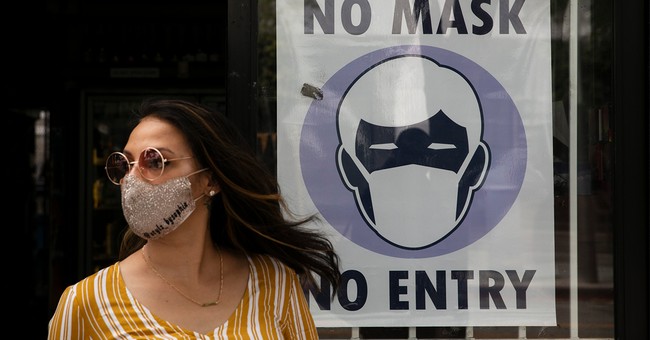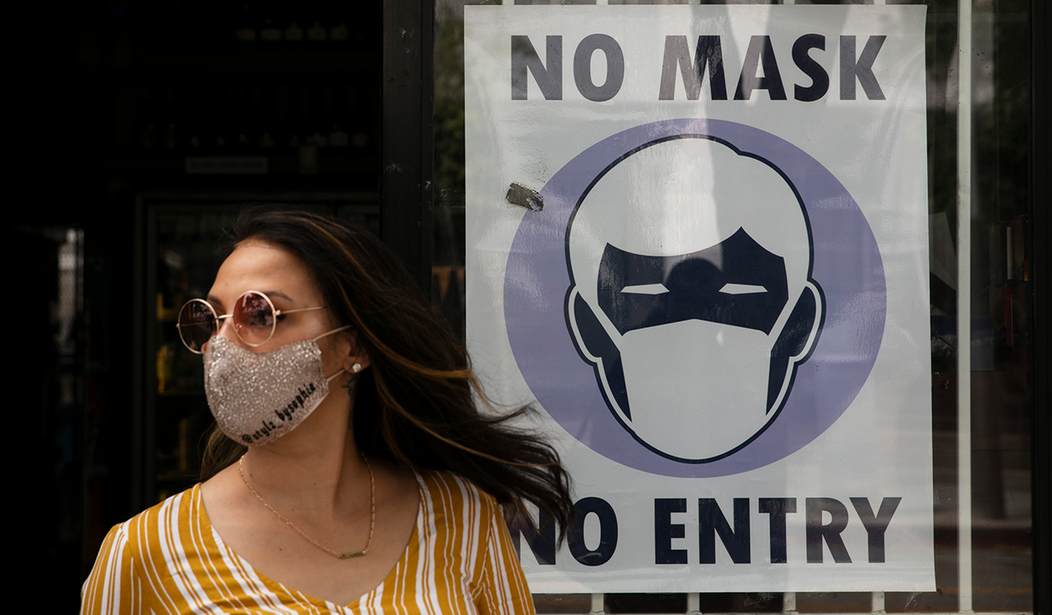
There’s been a great deal of anxiety-inducing news on the coronavirus front since cases began to spike in states such as Florida, Texas, Arizona, Utah, South Carolina, Nevada, Georgia, Missouri, Montana, California, Tennessee, and Oklahoma. Coupling that with news that Speaker of the House Nancy Pelosi seeks a nationwide mask mandate (the Trump administration shot that idea down pretty handily), Americans can’t be blamed if they begin to feel it’s stage one all over again. Even a deputy director of the CDC has gotten in on the panic promotion saying the U.S. has “way too much virus” to control.
Well try to relax, because there’s actually some good news out there despite the relative silence from mainstream media outlets. Here’s a few bits to hang onto as we weather the latest push to scare the hell out of us.
Former New York Times reporter Alex Berenson, who has been something of a bright light in ferreting out the disparate and ever-changing information about COVID-19, posted a fascinating email from an executive at a Texas ER chain explaining what’s happening in Texas. In short: testing is up in younger demographics for a variety of reasons, and hospitals are filling up with people who had delayed treatment for other illnesses during the height of the coronavirus scare. More testing means more cases but, according to what this executive is seeing, a great number of the new cases are very mild.
Wondering what’s really happening in Texas? Here’s the email, from a senior executive at a Texas ER chain that sees thousands of patients a month. He went on the record – a brave move. I’m going to let him speak for himself. (Two tweets of screenshots. Worth reading to the end.) pic.twitter.com/4xuBdTIFIc
— Alex Berenson (@AlexBerenson) June 30, 2020
Then there’s the fact that new CDC data, as covered here by Clay Travis, indicates that instead of the 2.6 million known coronavirus cases, the number is actually closer to 26 million cases based on new cases and antibody tests. As Travis notes, this has a serious effect on the death (and survival) rate of the disease.
Why is this CDC finding significant?
Well, it means nearly one in every ten Americans have already had the coronavirus, which is a fairly gigantic finding. It also means many of these infected people had such mild cases they felt no need to receive treatment. In fact, it probably means the majority of the people who have had the coronavirus in this country never even knew they had it.
But it also means, and this is perhaps the most significant data point, the coronavirus is far less deadly than we’ve been led to believe.
In fact, the CDC study suggests the all age death rate from the virus is roughly .5%. Meaning 99.5% of all people infected with the coronavirus, regardless of age, recover. (There are other studies that suggest the .5% death rate is still far too high, but it’s still significant that the virus has a 99.5% recovery rate per the CDC).
Journalist Jordan Schachtel added his own data point Monday noting that it saw the lowest number of deaths on record since full testing capacity was rolled out.
COVID-19 update: Today was lowest # of Monday deaths since March 23. 98 days ago. Lowest # on record w full testing capacity. New lows in deaths every week. Consistent decline week after week. Tune out media hysterics. Death rate is plummeting. Now, States just need to wake up.
— Jordan Schachtel (@JordanSchachtel) June 30, 2020
Additionally, peer reviewed research papers from JAMA and Thorax are being used together to suggest that most people, should they become infected, will only develop mild symptoms, and that there may be a higher number of people who become infected that show no symptoms at all.
Early research has shown that most people who contract the new coronavirus develop mild cases of Covid-19, the disease caused by the virus, and, in some instances, individuals infected with the virus don’t experience any symptoms of Covid-19. However, new studies increasingly are suggesting that the number of people who are infected with the new coronavirus but don’t exhibit symptoms of Covid-19 is higher than researchers previously understood.
Now the idea that more people who are infected never know they have it is, to be sure, a mixed blessing. Certainly those who are most concerned about the spread of the disease believe this is a dangerous data point. But mathematicians from University of Nottingham and University of Stockholm are studying a theory they’ve developed that indicates herd immunity from COVID-19 could be achieved with far fewer infected than originally thought.
Herd immunity happens when so many people in a community become immune to an infectious disease that is stops the disease from spreading. This happens by people contracting the disease and building up natural immunity and by people receiving a vaccine. When a large percentage of the population becomes immune to a disease, the spread of that disease slows down or stops and the chain of transmission is broken.
This research takes a new mathematical approach to estimating the herd immunity figure for a population to an infectious disease, such as the current COVID-19 pandemic. The herd immunity level is defined as the fraction of the population that must become immune for disease spreading to decline and stop when all preventive measures, such as social distancing, are lifted. For COVID-19 it is often stated that this is around 60%, a figure derived from the fraction of the population that must be vaccinated (in advance of an epidemic) to prevent a large outbreak.
…
Professor Frank Ball from the University of Nottingham participated in the research and explains: “By taking this new mathematical approach to estimating the level for herd immunity to be achieved we found it could potentially be reduced to 43% and that this reduction is mainly due to activity level rather than age structure. The more socially active individuals are then the more likely they are to get infected than less socially active ones, and they are also more likely to infect people if they become infected. Consequently, the herd immunity level is lower when immunity is caused by disease spreading than when immunity comes from vaccination.
Our findings have potential consequences for the current COVID-19 pandemic and the release of lockdown and suggests that individual variation (e.g. in activity level) is an important feature to include in models that guide policy.”
This is great news as we race to a vaccination that may or may not work as it means a vaccination — usually thought to be a key ingredient in the development of herd immunity — could take on lesser significance.
There are reasons to be optimistic. But if you’re looking for them, you may have to dig a bit. And take a break from the evening news













Join the conversation as a VIP Member